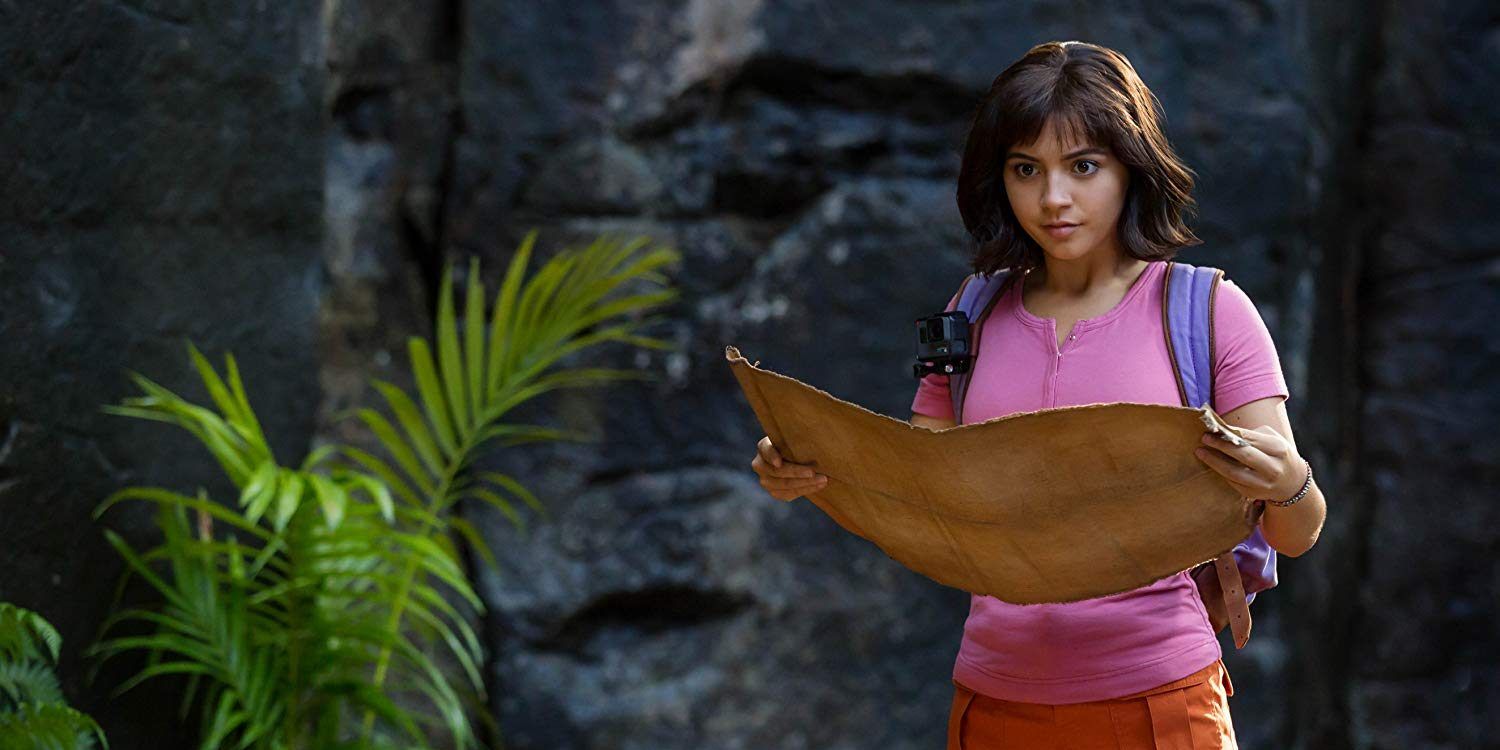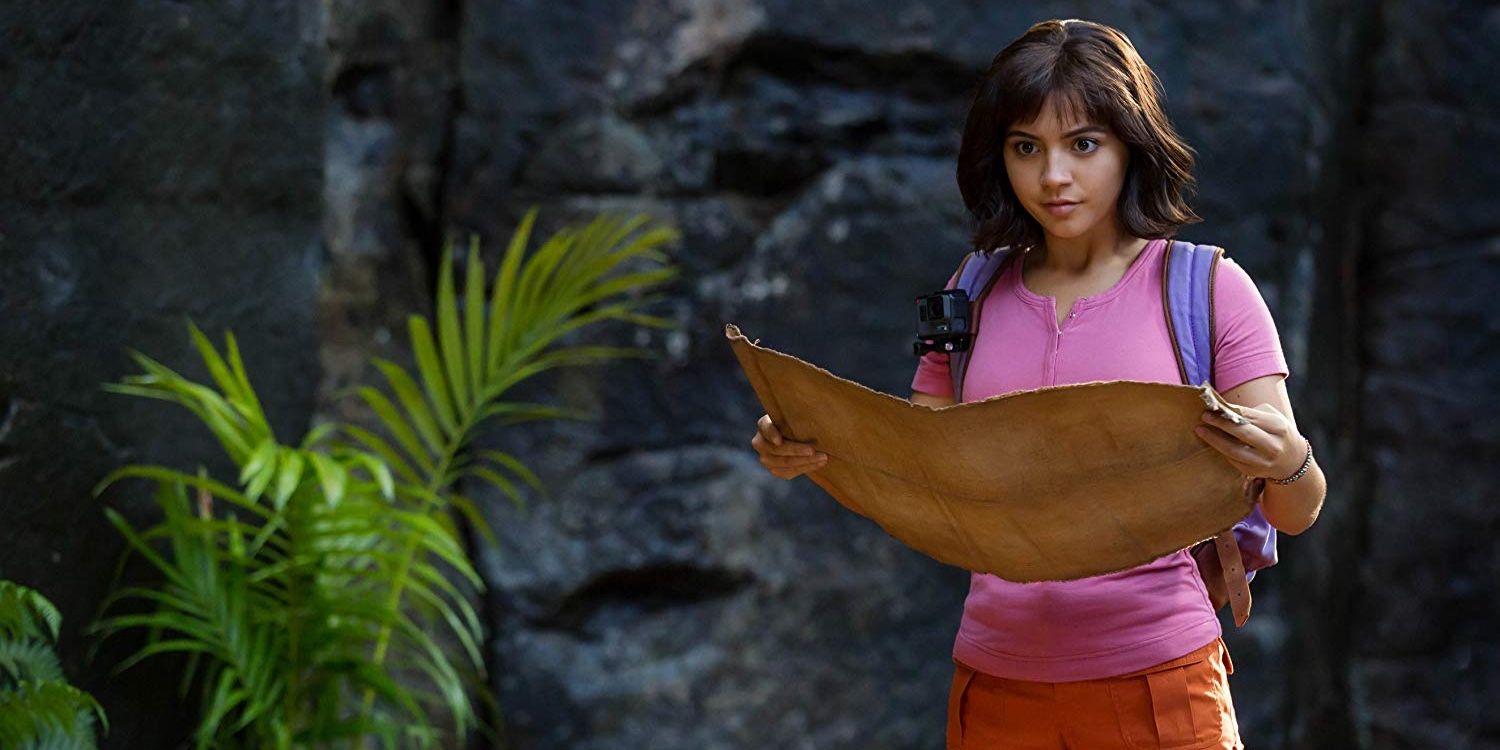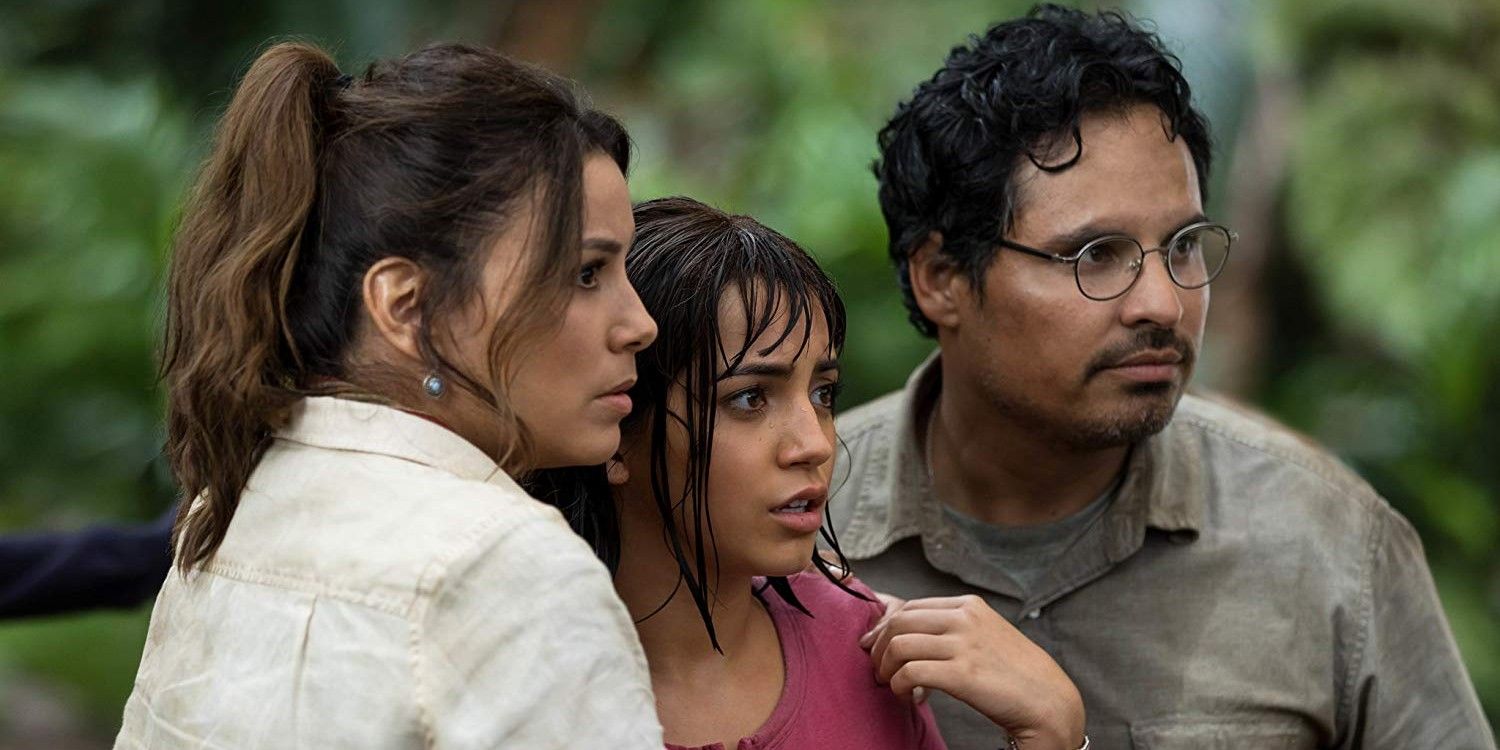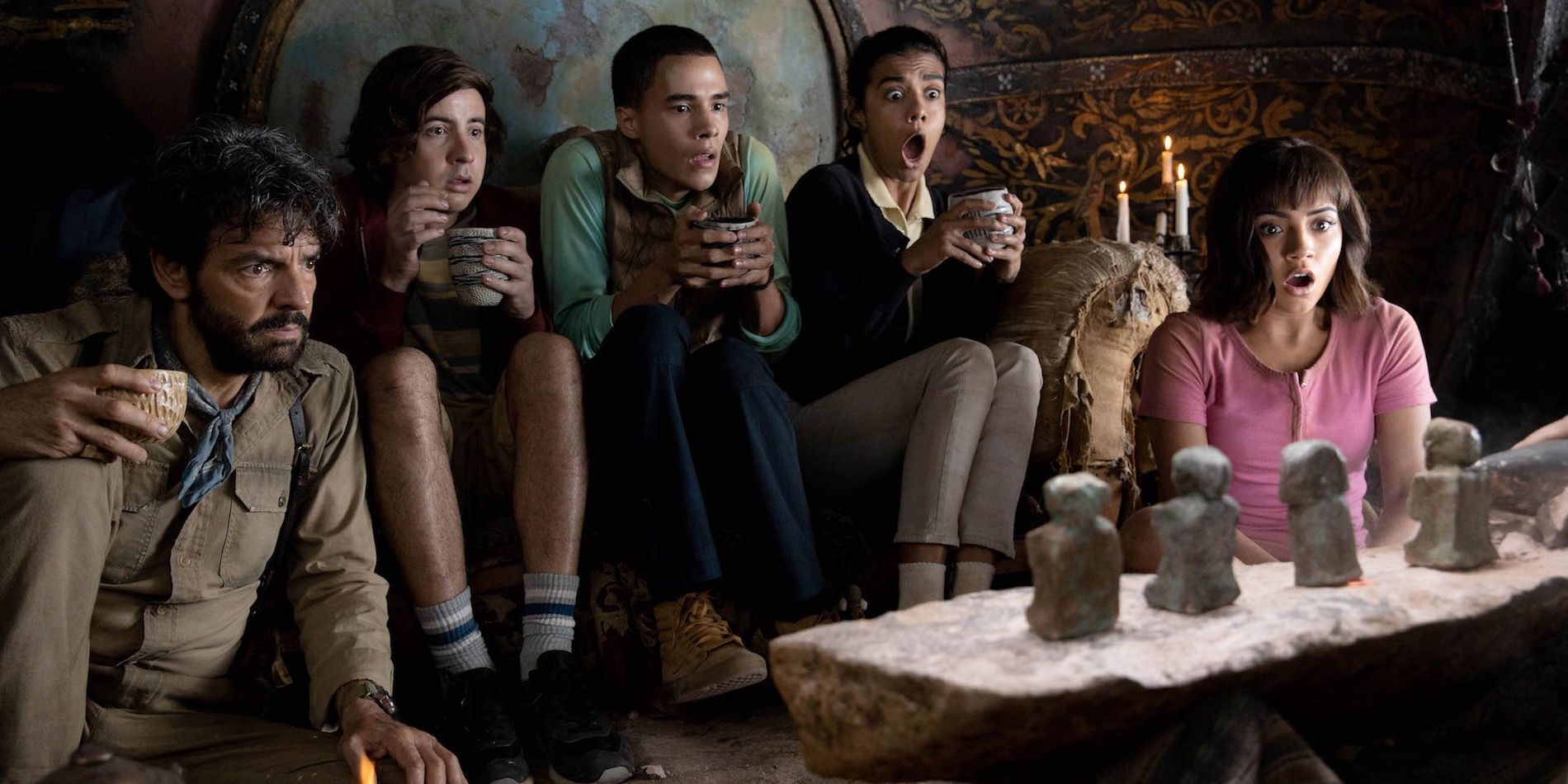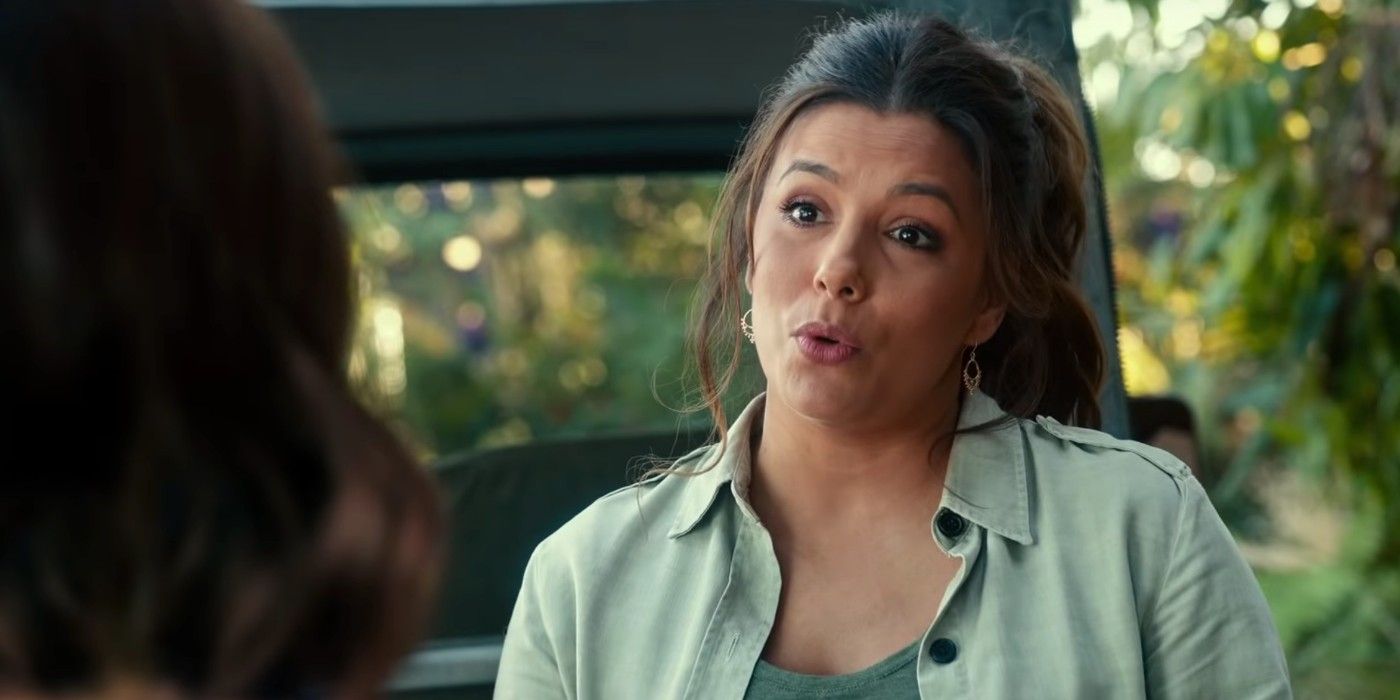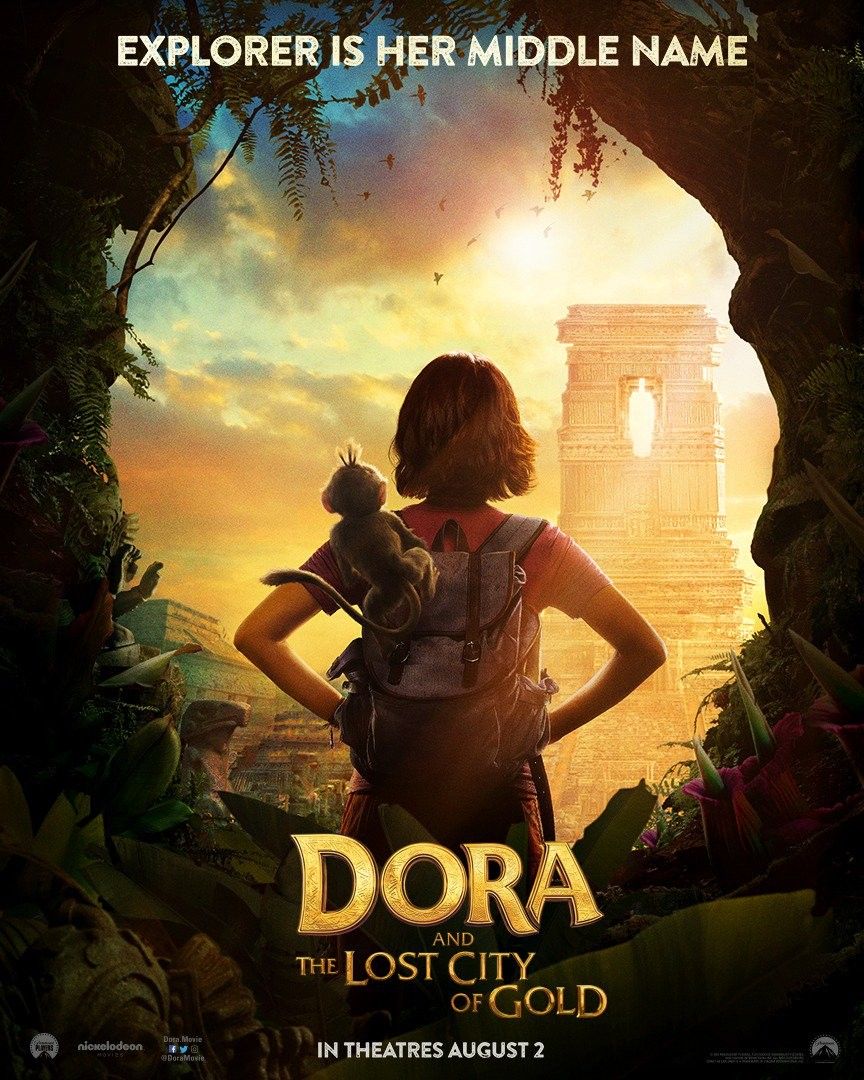When Dora and the Lost City of Gold arrives in theaters August 9, the animated 7-year old will become a live action teenager brought to life by Isabela Moner. The adaptation still maintains many of the fantastical elements from its predecessor, Dora the Explorer, however. Director James Bobin sat down with Screen Rant to discuss what it was like merging the two worlds, as well as why it was important to be accurate when dealing with indigenous Latin American cultures.
I saw Dora and the Lost City of Gold with my girlfriend’s daughter, and she loved it. I did too, so you hit the mark and also. I even thought, “Man, this is gonna be her version of Indiana Jones.”
James Bobin: I hope so. Because, as you see in the movie, I'm a huge fan of those types of movies. I’ve loved adventure movies from the beginning. They've always been around; people love adventure stories. But weirdly, I think Dora’s quite a good gateway into those kinds of movies, because you hear the story and go, “There's also this thing you may have heard of called Raiders of the Lost Ark.” That's how you get into it. And I love the idea that she can watch that next. That'd be awesome; that's so exciting.
But it was very much a conscious choice to introduce – not introduce, but kind of pay respect and pay homage to those movies that you liked as a kid. I always loved adventure movies because they’re like magic in the real world. It doesn't dragons or superheroes, the real world is a pretty amazing place if you look hard enough.
I want to start off by talking about Isabela. I think that she was perfect for this. I don't think that there was anybody else that could really do this.
James Bobin: It was easiest casting choice I made. She’s so fantastic. I mean, she's hilarious, properly funny, and she gets it. It's not an easy thing to pull off Dora, but also to be the Dora who's an internationally known character. To not only do her but make her more likable. She's so charming in it; you love her.
Being an older Dora, too, and keeping that positivity.
James Bobin: Because she's so expressive, her physicality is so intense, and her eyes are just so wonderful. Also because, if you look at the drawing of Dora, she’s got a very big head and very big eyes. Isabela has a kind of similar thing going on, where her eyes are so expressive. And so you'll see that in the movie, I'm always using her eyes because they're so effective, because it reminds you of Dora, and it's hilarious. She’s so good at reacting to things, and it's because Dora has a kind of lovely wide-eyed innocence about her. She's the same as 16 as she is at 6. So the idea from the very beginning, when I first read Nick Stoller’s script, was that if you stay true to the character, you can put her in a situation where it's going to be funny because she’s not going to be like any other kid her age.
That leads right into this question. In the animation, Dora’s only about 7 years old. How does Dora being in her teenage years affect the story and her character arc? What specific changes do you recall making in regard to aging her up?
James Bobin: It was partly a choice – obviously, to stay true the character – but it was also partly a comedic choice. We just knew it was going to be funny having this girl who doesn't change, especially because I know today's youth, which is the social media-obsessed, self-aware group of people that they are, God bless them. But at the same time, Dora is not that.
Dora is like, “I'm bookish. I know about smart stuff. I don't know anything about the world of social media.” But I love the idea of that girl being dropped into the real world right now. And of course, one of my inspirations for that that was something like Will Ferrell as Buddy in Elf. It's a very similar idea: he comes from the North Pole and it’s, “welcome to the jungle.” It's a similar idea, really. But Isabela plays it so beautifully, and you can say so much about the contemporary world. Because then, of course, you take her out of that world and put her back where she's from. They come with her and go, “Oh, wait a minute. She's awesome, and she's got so much going for her. Maybe we can learn something from this girl.”
That goes back to one of my guilty pleasure movies, Mean Girls. It's a younger version of that.
James Bobin: Yeah, I love Mean Girls. It's a fantastic movie. But yeah, exactly, it’s the idea that Dora is really just true to herself. She just can't help but be who she is. She says to Diego, “I am aware of people laughing at me, but I can't help but be me.” And that is a great thing. I think that's really important because we're not ever really laughing at Dora. We’re laughing with Dora because we love her. Because she's being true.
I love that line. This movie is a lot of fun because it seemingly harkens back to the 80s adventure movies like Fright Night or The Goonies. Were some of those movies influences for you?
James Bobin: Hugely so. There's a whole water slide sequence in the movie which is entirely Goonies. Because I know that as a kid, when you watch a movie, you feel you're in the movie. So watching those slides, you're going, “That'll be really fun to do that.” And that is fantastic.
Even things like Honey, I Shrunk the Kids. It’s the classic. You know, there's the [neighbor Russell] and the older sister, and they kind of have a small kiss at the end. I love that. It's just very sweet thing, and it felt like a thing we could do again. I love the sense of the adventure in the ordinary, and I love that idea too for this one.
There a lot of aspects of the Latino culture and history found in the film. However, the film goes one step further by adding the indigenous language of Quechua. Why was that decision made?
James Bobin: Partly for historical accuracy. I think it's super important, as Dora on TV is an educational show. So people are always going to see an educational side to this. I was very careful about the language being completely correct.
Also, the idea of Parapata being a Lost City itself. Parapata is a made-up word, but there is a real place called Paititi. Paitit is famous in history as a Lost City. It was the Treasury, apparently, of Incan culture and they have yet to find it. There is a film by James Gray called The Lost City of Z, and it's based on trying to find that city. It's a real place. We tried to get into it, because I always loved the idea, like the Ark of the Covenant. It's a thing that feels super real to me, and all that stuff is based in reality. So, in this movie, the origin is true. Not strictly true, but it's based on [truth]. Because I do love the idea as a kid that there's magic in the real world. If history provides it all the better, but you have to be as accurate as you possibly can be in that situation.
I love that. While she's much younger in the cartoon, education has always been a huge part of Dora’s personality. What qualities does a high school setting bring out for her?
James Bobin: Because she's quite book-smart not street-smart, being in school kind of works. She immediately meets someone who’s another top of the class girl, and she's instantly a threat because there's never been another smart person in school before. Until this girl turns up and is naturally so smart. And I love that idea that being book-smart’s okay, but you don’t have to be book-smart. It's cool, doesn't matter. If people learn that from it, it will be better. Remember school’s fun, everybody.
I think it’s a good thing to learn that you can be smart, and that's cool. Dora is so uncool that, in some ways, maybe she's cool. I don't know. That’s the thing. The movie doesn't ever set out to be cool, but maybe that makes it cool going out the other side.
There are lots of puzzles when they get to the to the last city. It felt almost like an escape room to me.
James Bobin: Yeah. And again, Dora solves puzzles in the show. That's kind of one of the things I felt we took from it. But I love movies with puzzles and jungles – we talked about in the movie. “I've seen several movies about the jungle,” that kind of thing, where we kind of self-reference and are self-aware.
But I do legitimately love the idea that kids who, when they work together and use their combined brainpower because they're smart kids from school, work this stuff out. And also, because Dora knows the language and the symbols in the night sky and astronomy and that kind of stuff, being smart pays off sometimes. You know what I mean? But at the same time, that end result isn't about the treasure. It's about the knowledge, and that's totally Dora. And that's really great.
Just like Deadpool, Dora kind of breaks the fourth wall. Why did you choose to keep that in the film?
James Bobin: Again, we are from our source material. I wanted to reference the source material without being a slave to it, so it important that we kind of pay homage. Hence, we have an animated 6 in the movie, which is kind of our version of the TV show. It's just a fun thing.
So, as an adult, you kind of get the joke of what it really is. But as a kid, you go, “This is kind of funny, it’s like a funny dream.” Again, it's multiple levels. But breaking the fourth wall was something I felt we should do at the beginning and get that idea out, but not do the whole way through the movie because it might be distracting. You pay homage without making it a theme, you know what I mean? It kind of works, I think, in the beginning.
In the beginning of that film, the 4-year old literally had a smile on her face ear-to-ear. She had so much fun watching that. But when you do that animated sequence, I was like, “This is so smart.”
James Bobin: It’s also a good way of getting characters from the TV show in the movie that you couldn't do otherwise. Because then if you have Benny the [bull], it’s not a thing. It's fine. And also, you know, the Fiesta trio at the end. If you know the show, stick around; there's a lot in the movie for you. But if you don’t know the show, you’ll still have fun adventures for an hour and a half with really funny people.
I want to talk about Isabela's dance sequence, when she's wearing the sun costume. How much of that was improvised?
James Bobin: There is a very clever man in England, who's a physical comedy genius. And he does a lot of clowning and circus, I said to him, “If a girl from South America comes to America and does a dance based on various animals, what do you got?”
He sent me videos of, like, the Llama, the Peacock, the Elephant. So I gave them to Isabela to do it, and she nailed it. Because it's that thing where, if you dance by yourself in the mirror, you think you're good at dancing. And she’s been dancing by herself for 15 years, so she thinks, “I love dancing. I'm really good at it.” She’s very confident about her dancing ability. Obviously, she’s never done it in front of people, who go, “What on earth is this girl doing?”
And that's just perfect Dora, because she doesn't really care. She’s just having fun and doesn't mind what people think about her. And again, for kids this is a fantastic lesson that you shouldn't mind what people think about you. It doesn't matter. It's about you.
The lyrics for that and the dancing bits were brilliant.
James Bobin: That was written by my friend Bret McKenzie from Flight of the Conchords. So, you know, it's one of those things whereby he and I worked on The Muppets very successfully, and I loved working with him. And so, I said to him, “We want to do a song in the film, and it's basically going to be a summarization of the entire movie in a song.” And he went, “Sure, no worries.”
He sent it back to me about a week later, and I said, “This is perfect, we’ll shoot this. Thanks very much.” It was really fun. Also, it’s fun ending a movie with a song. I love that.
The making of this should be a movie in itself.
James Bobin: Well, it’s Australia. Everything there was out to kill you. Spiders, bugs, snakes, everything. It was crazy, but it was fun. So, I had a good time.
Is this film a sequel to the show, or is it a standalone adaptation?
James Bobin: I think it's… Is it a sequel? I don't really know. I think they can coexist side-by-side. I would like to think this is the start of many of these kinds of movies. Because I think Isabela’s incredible as Dora, and so I see no reason why you couldn't do a series of these kinds of movies. Because it's really fun. I love adventure movies, and I think these days would be nice to keep doing adventure movies. It’s that thing about magic in the real world.
I want to talk about Diego for a second, because you explore something that we have never really seen with Diego. Why was that direction taken? I love it, because Diego finds a lot in himself.
James Bobin. He does. It was partly just for the story arc, frankly, because we wanted to do Diego and Dora at an early age going in different directions. Diego becomes a normal kid from like the street or from the city, basically. So when he comes in, he’s not going to know much. Had Dora gone with him, she might be the same as him.
He's like a normal, typical kid. And so, when Dora turns up and she's very much not a normal typical kid, this is going to conflict. And then you can resolve that throughout the movie, because what you want to see is Diego and Dora make up and be friends again at the end. Diego then remembers his childhood, remembers the jungle, remembers that Dora was his best friend. And it's kind of great; it’s a lovely arc to have. So to have that arc, you have to have him in the beginning being a bit like, “This kid is really weird. She’s ruining my life, go away.” Which is great, and that's kind of what would happen if this crazy cousin turned up and ruined your vibe at school. You’re trying to be cool, and this girl ruins it. That's going to be a nightmare for you.
Jeff, who plays Diego, is so charming that it was very helpful. Because I didn't want people not to like Diego; I wanted people to sympathize with Diego’s situation. And I think he pulls it off so well, because you kind of like him, no matter that he’s being a bit mean to Dora. You understand why it’s awkward for him. And Jeff is so nice and such a lovely guy, that that comes across through Diego. He doesn't mean to be mean, it’s just how he can’t help himself because school’s tough. He says it's a horrible nightmare.
The supporting cast is brilliant. Danny Trejo as Boots? I would have never thought that.
James Bobin: That was an idea that came to me a long time ago, when Nick started writing it ages ago. Obviously, Boots is mostly monkey, and there’s a really good gag in the movie. But I know Danny from Muppets Most Wanted. He was one of our dancers, and I knew he was a sweetheart and he’d love to do something like this. So I thought he'd be really fun for Boots, because he is a very, very sweet guy and Boots is a very, very sweet monkey. So I thought it’d be a good match up.
And Benicio?
James Bobin: Same deal, man. I knew he would be an awesome Swiper. And again, I had a picture of Swiper right on my desk, and I thought, “Hmm, this is a bit Benicio.”
He did ADR, since we were working on the movie in London and he was in LA. I just heard his voice for Swiper, and he was so fun. I was so pleased to meet him on Sunday. Ad he loved the film, which was so fantastic because you never know. But he was so sweet and amazing as Swiper, because you haven’t got a lot to work with on the show, so the other stuff that we kind of worked on together in the ADR sessions.
And he does a sly Tony Montana thing, which is a good gag for adults, but kids don’t know what it is. But it's funny, you know? So, it's that thing where the movie tries to do as much as it can for everybody. It's funny jokes for adults, funny jokes for the kids, just make it a tone thing.
We never get to explore Dora’s parents that much on the TV show, but you got Michael Peña and Eva Longoria. Amazing job. How much of their performance is on the page and how much of it is them?
James Bobin: Oh, I think a lot of it is them. I mean, the page is the page, obviously. Lots of stuff is based on story beats and narrative. But they're both really funny people, so I was very encouraging of them saying, “Not quite that. Let’s do something else.” And so stuff like the [dad’s dramatic beatboxing] was totally Michael. He loves dance music, so he kind of gets it. And I thought it was funny, because I haven't seen a lot of jokes about EDM in the history books. So I quite liked the idea of having an EDM joke in it.
I love that he’s beatboxing and drops the beat. Amazing.
James Bobin: So amazing. Once it goes on for that bit too long, it's really brilliant. That kind of thing is just him being funny, and he's just so good at that. I was so pleased to have them, and they're such fun together. And they're perfect for Dora, because they'd be awesome parents to have. It was really fun.
So much fun. This movie finds a clever way to update the fantastical elements of the show, whether it's Boots and Swipe or the talking backpack What was your approach while adapting the magical elements in Dora’s world?
James Bobin: I knew movement we were going to be live action. If you make a movie live action, the monkey’s gonna have to be a monkey – but at the same time it started as a cartoon. Cartoons are very expressive, and so the monkey I ended up with was very much a conscious choice. It’s a monkey that looks like a monkey, but it's not any breed of monkey you can see in the real world. It’s a monkey with really big eyes and whose fur is apparently blue. So you can still be funny, because I knew I wanted Boots to be funny.
Same thing with Swiper. He wears gloves – foxes don't wear gloves. He looks a lot like a fox, but he's not like a real fox. You'll see stands on two legs all the time. It’s that thing were we constantly make them look like they could be real, but the same time they have to be true to that cartoon origin, I guess. Because it enables you to be funny.
One of the things we talked about is Paddington, who is a bear but like a human bear. You keep the anthropomorphizing of the characters still. So, Swiper’s a fox but kind of human-ish fox. And Boots is a monkey, but he understands everything and he’s kind of like a human monkey. That's why when at the beginning, Michael says to Dora, “Boots is a wild animal, don’t put boots on him,” and he takes them off and starts eating them, you get that joke.
Have you given any thoughts to a larger story for either a sequel or trilogy?
James Bobin: Yeah, I’d love to. I think there's so much room for that, because she is really such a fun character to spend time with. I do think that these days movies are often about spending time with people you like. Dora is such a likable a fantastic and character. We have such an incredible cast, I'm happy to spend another hour with these people. Maybe somewhere cold next time.
Last question: there's so many things you can take away from this. What do you want audiences to take away from Dora?
James Bobin: I do love the idea that she's just herself, and I think that's really important. It's hard to be yourself in a world where you're constantly being judged by other people or other ideas. Especially teenage kids. It's very important that you maintain a sense of self, and I hope that's what comes across the most.
Well, you guys knocked it out of the park.

